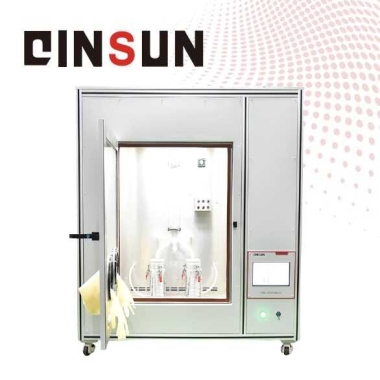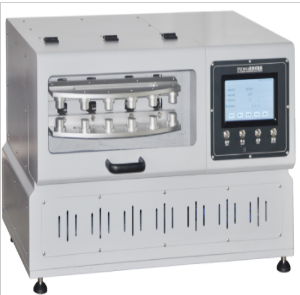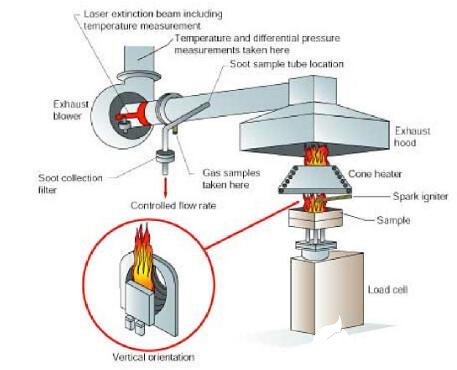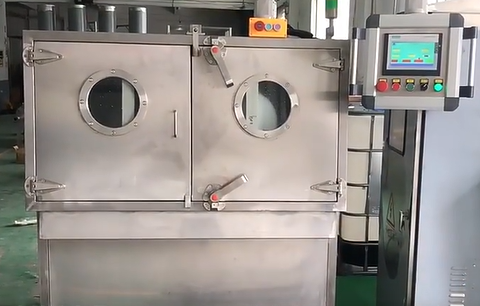What is Bacterial Filtration Efficiency (BFE)?
FAQ 13 10 月, 2025
In disease prevention and control, as well as in everyday health care, masks have become an indispensable barrier. However, not all masks offer the same level of protection. One of their core performance indicators is Bacteria Filtration Efficiency (BFE). BFE directly measures the mask material’s most critical ability to block bacterial droplets. Whether in surgical settings, protecting patients from respiratory droplets from doctors, or in public settings, preventing respiratory patients from spreading pathogens to the surrounding environment, BFE is the lifeline for evaluating the quality of surgical and disposable medical masks. Understanding BFE means understanding how masks provide an invisible first line of defense for our health.
The Essence of BFE: A Targeted Protection “Shield”
BFE (Bacteria Filtration Efficiency) refers to the effectiveness of the mask material in blocking bacteria produced by the wearer. It is primarily used in surgical and disposable medical masks, and these products may have BFE indicated on the packaging.
Disposable medical masks and surgical masks are primarily used to block bacteria from droplets exhaled or sprayed from the wearer’s mouth and nose, thereby protecting the environment and surrounding personnel. A typical application is for individuals with respiratory infections (such as tuberculosis and influenza) or confirmed patients to wear disposable medical masks. This helps prevent droplets containing pathogens or viruses from contaminating the environment and infecting others. Doctors must also wear surgical masks during surgical procedures to protect the surgical wound from contamination by bacteria-laden droplets expelled by speaking and breathing. This is done to protect patients.
Laboratory Measurements
BFE testing, conducted in the laboratory according to relevant product standards, involves using a bacterial culture medium to generate large droplet spray to simulate human droplets. This spray is then applied to the mask material at an airflow rate of 28.3 liters per minute. The mask’s interception efficiency is then measured, typically requiring a BFE of at least 95%. Based on these functions and applications, we can see that these two types of masks do not require a tight fit to the face to achieve their goal of protecting the environment and others. Historically, gauze masks were invented to protect patients during surgery and have been successfully used in hospitals for hundreds of years.
The Critical Role of BFE in Blocking Transmission
In my country’s mask standards, both pharmaceutical industry standards YY 0469-2011 “Medical Surgical Masks” and YY/T 0969-2013 “Disposable Medical Masks” stipulate BFE—both must be at least 95%—a key feature that distinguishes them from other masks.
From a pathological perspective, the air contains a large amount of dust, bacteria, and other substances, all of which can enter the human body through breathing and cause illness. During a pandemic of respiratory diseases, the number of airborne pathogens is even greater. Therefore, for a healthy person wearing a mask with both BFE and PFE standards, it acts as a barrier to the respiratory tract, thereby blocking the transmission of pathogens. This reduces the chance of pathogens entering the respiratory tract through talking, coughing, or sneezing, thereby reducing the risk of contracting infectious diseases.

Mask Bacterial Filtration Efficiency (BFE) Tester
In the fields of medical protection and personal health, the quality of masks is crucial. The Mask Bacterial Filtration Efficiency (BFE) Tester is a precision device specifically designed to measure the percentage of bacterial particles blocked by mask materials at a specific flow rate. Its superior performance and reliable data provide critical assurance of mask quality. This article will delve into the core advantages and key features of this tester.
Core Technical Advantages
High Precision
Traditional single-channel sampling may introduce errors in intermediate steps. This device innovatively incorporates dual sampling systems, A and B, each with a flow rate of 28.3 L/min. The two samplers operate simultaneously, enabling direct data comparison and fundamentally eliminating the potential bias associated with a single sampling path. Combined with a high-precision peristaltic pump, it offers a wide flow rate setting range (0.001 to 3.0 mL/min), a resolution of up to 0.001. and an error rate as low as ±2.0%, ensuring highly accurate and reproducible test results, providing reliable data support for scientific research and quality control.
High Safety
Safety is the paramount principle of laboratory work. This detector utilizes a negative pressure test system, completely enclosing the aerosol generation, transmission, and sampling processes within a negative pressure cabinet (pressure range -90 to -120 Pa), effectively preventing the escape of harmful biological aerosols. Furthermore, the device incorporates multiple safety features, including overload protection and leakage protection, providing a solid safety barrier for operators and completely eliminating potential safety hazards.
Intelligent Operation
The device features a 10-inch programmable color LCD touchscreen with an intuitive and user-friendly control interface. Users can easily set all parameters (such as peristaltic pump flow rate and spray volume) and monitor the device’s operating status in real time. Imported core components ensure long-term operational stability and reliable test data, effectively reducing equipment failure rates and maintenance costs.
Diverse Application Scenarios
The performance indicators of the mask BFE tester fully comply with mainstream international standards, including ASTM F2100. ASTM F2101. EN 14683. as well as China’s YY0469-2011 and YY/T 0969-2013. ensuring the global credibility of its test results.
Its technical specifications are industry benchmarks:
High-efficiency particulate air filter: Filters particles 0.3μm and 0.12μm with a filtration efficiency of ≥99.995%, providing a clean air source for testing.
High-quality aerosol generation: The generated aerosol has a stable mass median diameter of (3.0±0.3)μm and a geometric standard deviation of <1.5μm, resulting in excellent atomization and a realistic simulation of bacterial carriers.
Six-stage Anderson sampler: Accurately collects particles across different size ranges, enabling detailed analysis of aerosol distribution.
With its precise and reliable testing capabilities, this device is not only suitable for mask manufacturers conducting incoming raw material inspection and outgoing quality control of finished products, but is also an ideal tool for metrology and calibration departments, third-party testing organizations, and research institutes at all levels for product certification, method development, and standard verification. It serves as an authoritative “judge” to ensure that mask products comply with regulatory requirements and protect the respiratory health of frontline medical workers and the general public.
The sudden outbreak of the past has made us realize the importance of health. It has made us even more aware of the unpredictable spread of disease. From its origins in the surgical operating room to global public health emergency responses, BFE, as a time-tested metric, has always been the cornerstone of measuring the basic protective function of masks. It represents more than just a cold percentage; it reflects the social responsibility of masks as a “two-way protection” tool—protecting others as well as oneself. Multiple standards establish a clear safety baseline for medical masks.
When we choose a mask that meets BFE standards, we are not just wearing an item; we are proactively creating a solid physical barrier to the respiratory tract, effectively reducing the risk of infection and safeguarding public health and safety.
In a complex health environment, correctly understanding and choosing high-BFE masks that meet the standards is a wise and responsible protective measure that each of us can take. This is not only for personal health, but also to a certain extent protects global security.


